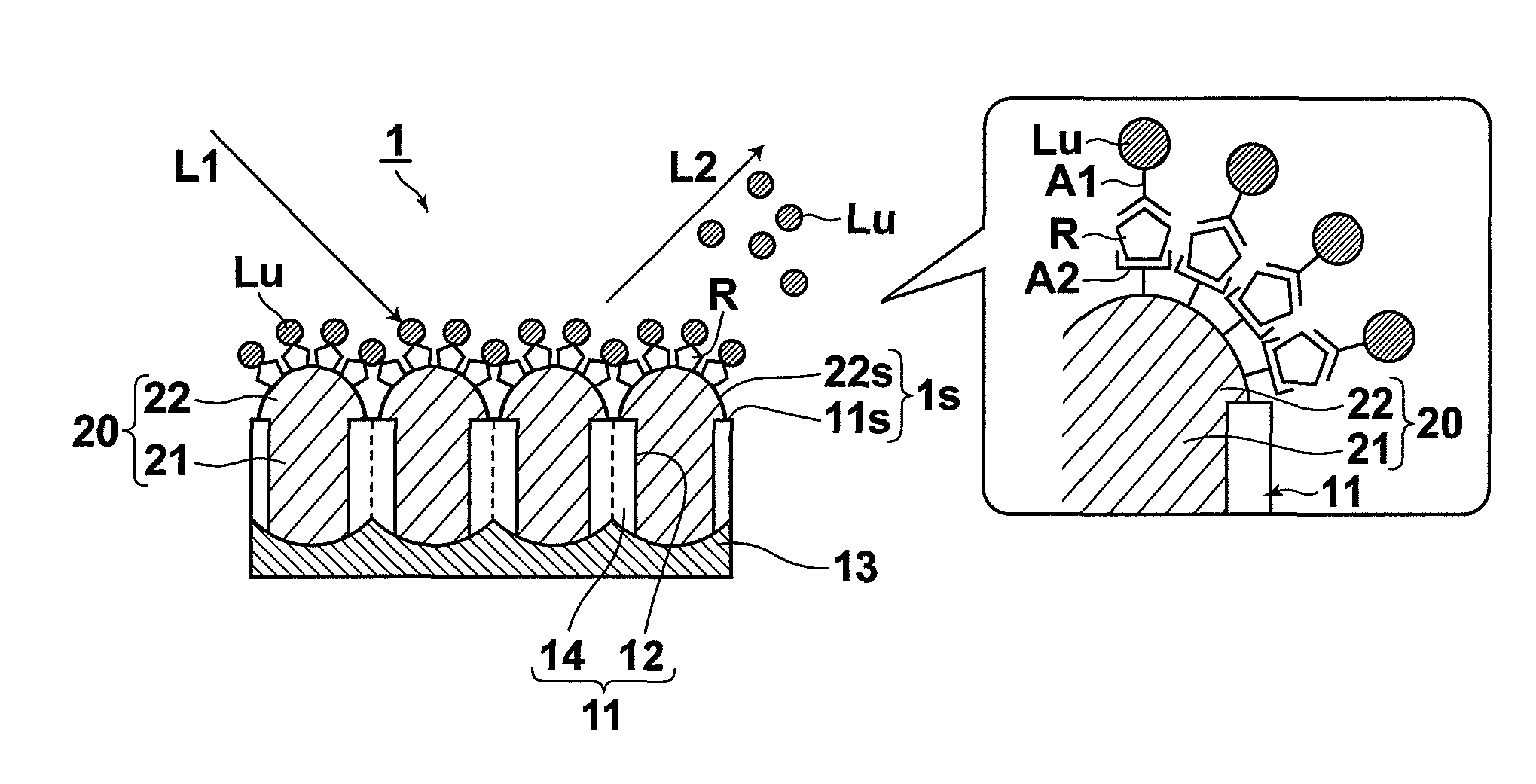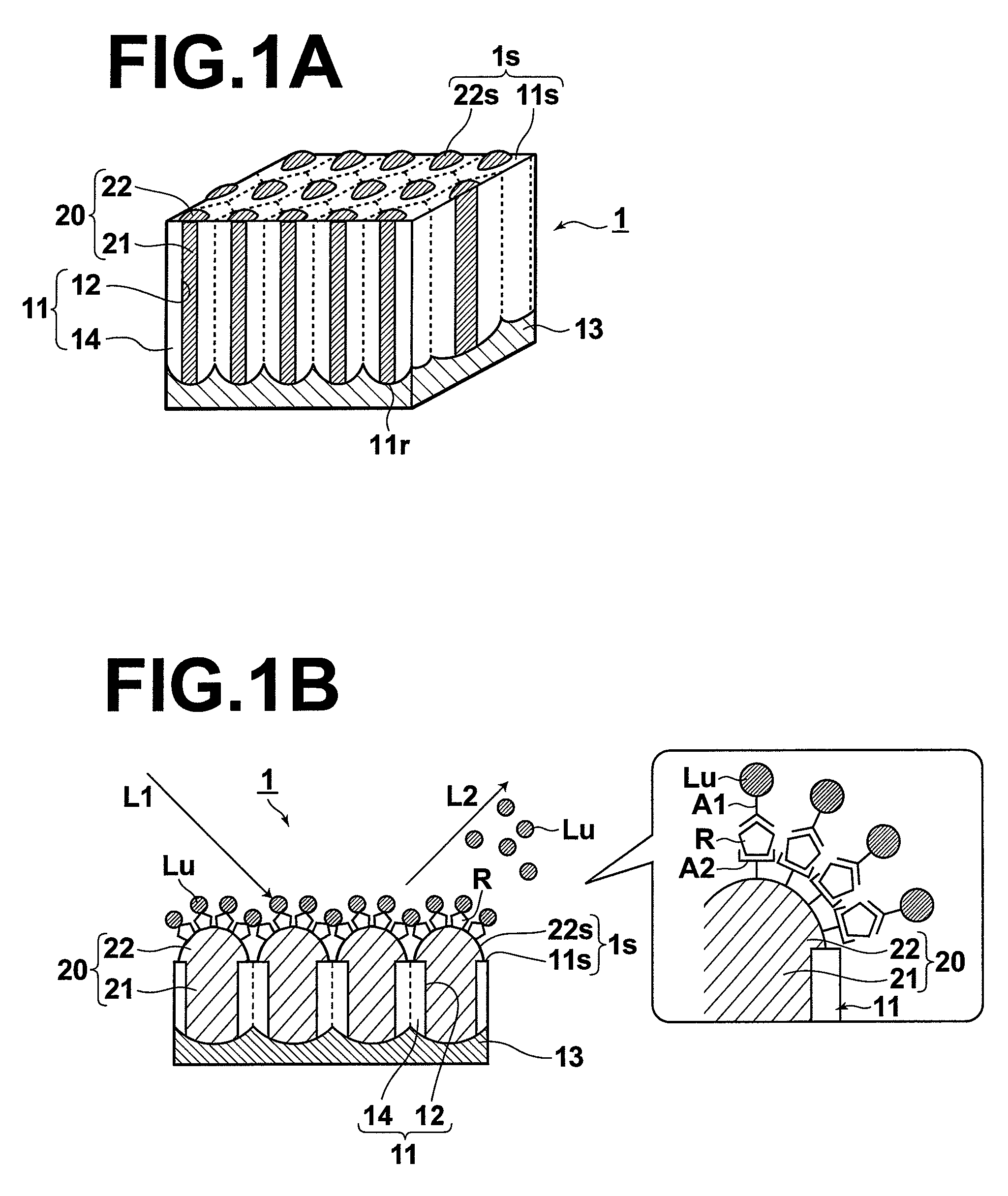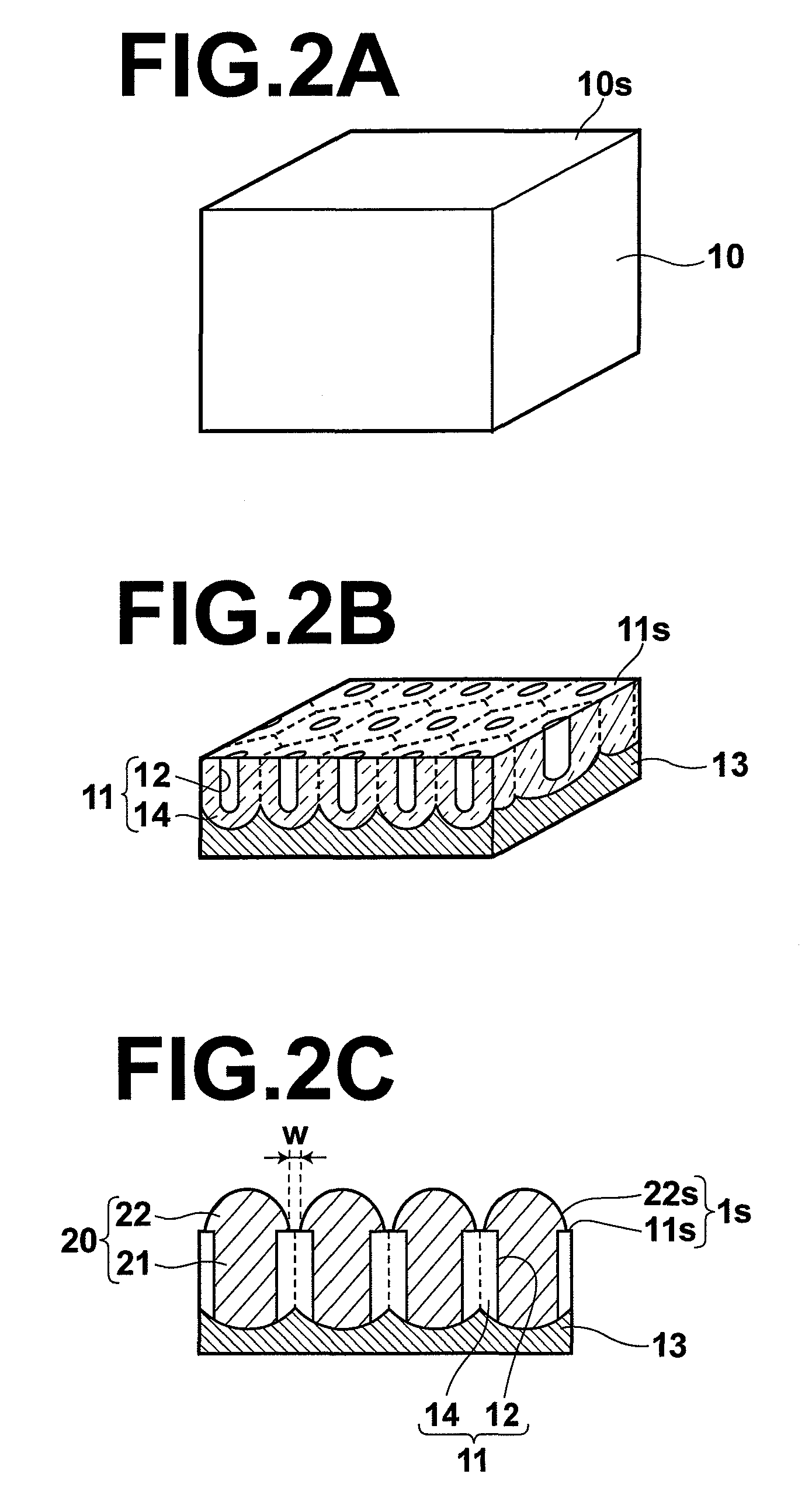Surface plasmon sensor, sensing apparatus and sensing method
a surface plasmon and sensor technology, applied in the field of sensors, can solve the problems of reducing the accuracy of initial detection of fluorescence, affecting the detection accuracy of original detection of fluorescence, and absorbing excitation light by prisms, so as to increase the power of measurement light, increase the probability of transition, and enhance the effect of localized plasmons
- Summary
- Abstract
- Description
- Claims
- Application Information
AI Technical Summary
Benefits of technology
Problems solved by technology
Method used
Image
Examples
Embodiment Construction
Sensor
[0053]The structure of a sensor according to an embodiment of the present invention will be described with reference to the attached drawings. FIG. 1A is a perspective view showing the whole structure of the sensor. FIG. 1B is a cross-sectional view of the sensor in the thickness direction of the sensor during sensing. Further, FIG. 1B includes a schematic diagram illustrating a binding state at a sensing surface during sensing. FIGS. 2A through 2C are diagrams illustrating the process of producing the sensor according to the present embodiment.
[0054]A sensor 1 according to the present embodiment is used in sensing, in which a substance R to be detected is marked with a fluorescent marker Lu that selectively binds to the substance R to be detected and one of two-photon excitation fluorescence and multi-photon excitation fluorescence of the fluorescent marker Lu is detected. The sensor 1 includes a sensing surface 1s, to which only the substance R to be detected can bind.
[0055]...
PUM
| Property | Measurement | Unit |
|---|---|---|
| diameters | aaaaa | aaaaa |
| diameter | aaaaa | aaaaa |
| average distance | aaaaa | aaaaa |
Abstract
Description
Claims
Application Information
 Login to View More
Login to View More - R&D
- Intellectual Property
- Life Sciences
- Materials
- Tech Scout
- Unparalleled Data Quality
- Higher Quality Content
- 60% Fewer Hallucinations
Browse by: Latest US Patents, China's latest patents, Technical Efficacy Thesaurus, Application Domain, Technology Topic, Popular Technical Reports.
© 2025 PatSnap. All rights reserved.Legal|Privacy policy|Modern Slavery Act Transparency Statement|Sitemap|About US| Contact US: help@patsnap.com



